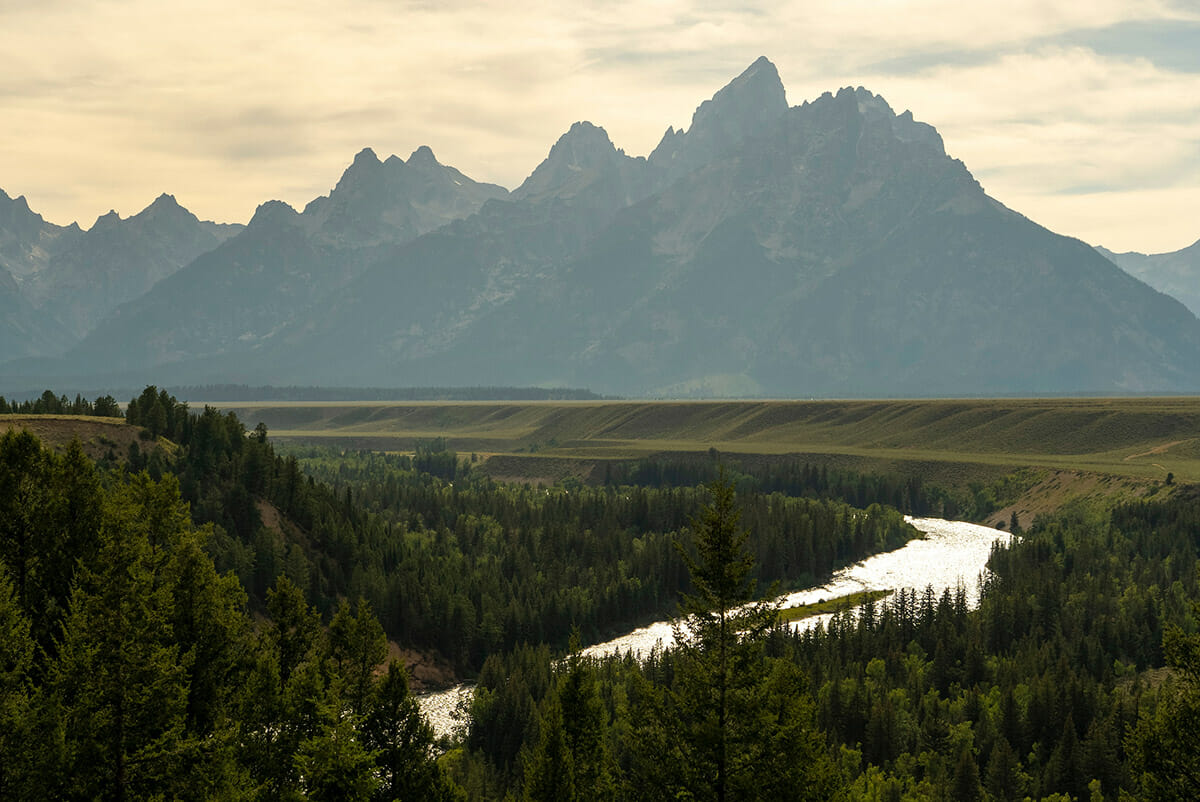
Contact: Nick Gann, Rocky Mountain Communications Director, Trout Unlimited – nick.gann@tu.org
Trout Unlimited media resources: https://tu.org/about/media
JACKSON, WY — Trout Unlimited and partners recently broke ground on two fish passage and habitat restoration projects along the Buffalo Fork of the Snake River. Part of the federally designated National Wild and Scenic River System, the Buffalo Fork provides important habitat for native Snake River cutthroat trout and other native fish including mountain whitefish, bluehead suckers (a Wyoming Species of Greatest Conservation Need), mountain suckers, sculpin, and dace.
“The health of the Buffalo Fork is incredibly important for the fish and people of Teton County, with the land in this watershed managed by the Bridger-Teton National Forest, Grand Teton National Park, and local ranchers,” said Leslie Steen, Wyoming state director for Trout Unlimited. “Once completed, these projects will not only reconnect and restore miles of this iconic watershed, but will also make native Snake River cutthroat trout more resilient to future catastrophic events by allowing them to access historical spawning grounds for the first time in decades.”
Known as the Lava Creek Fish Passage Project and the Blackrock Creek Bioengineered Stabilization and Habitat Enhancement Project, these two projects will undertake different methods to restore this watershed.
The Lava Creek project, for example, will remove and replace two concrete irrigation diversions that have acted as barriers to fish passage for 70 years. Used by the 1,200-acre Pinto Ranch to irrigate pasture and hay meadows for horses and cattle, removing these diversions will not only reconnect 9 miles of fish habitat primarily in the Bridger-Teton National Forest, but will also insulate native fish from the effects of climate change by allowing them to access historical spawning and refugia habitat.
The Blackrock Creek Project, on the other hand, will address the impacts of recent high flow events that have caused the creek to migrate and even flood the U.S. Forest Service’s Blackrock Ranger Station in 2017. To better accommodate these high flows and prevent future flooding of the ranger station, irrigation infrastructure, and private properties downstream, the project will use bioengineered bank stabilization techniques – essentially planting large trees, willows, and other organic matter to stabilize streambanks – to reduce future land loss and maintain existing irrigation uses in a manner more compatible with Blackrock Creek’s Wild and Scenic values.
“Both habitat restoration projects are essential for increasing the health of the native cutthroat trout population within the Buffalo Fork watershed,” said Chance Roberts, fisheries biologist for Bridger-Teton National Forest. “Both projects will restore natural river flow, opening up historic spawning/rearing habitats and allowing native cutthroat trout to utilize a broader range of once-inaccessible habitats. Additionally, this expansion of accessible habitat will foster greater genetic diversity within the cutthroat population, strengthening resilience against environmental changes, diseases, and other stressors. Restoring this natural connectivity promotes a healthier aquatic ecosystem, benefitting cutthroat trout and other native fish species populations that depend on free-flowing river systems.”
“Both of these projects are critically important to the things we all love about Teton County: our public lands and native trout,” said Steen. “This is why we were able to bring local, state, and federal partners to the table to help fund these projects – and even secure financial support from the Bipartisan Infrastructure Law, Inflation Reduction Act, and Trout Unlimited’s Keystone Agreement with the U.S. Forest Service. We are grateful to the Bridger-Teton National Forest for creating a new Watershed Restoration Action Plan for the Blackrock and Lava Creek watersheds to help prioritize and fund these projects.”
Specifically, the projects benefitted from the following funding:
Lava Creek Fish Passage Project
Funding provided by: Jackson Hole One Fly, Jackson Hole Trout Unlimited, Pinto Ranch, Teton Conservation District, Wyoming Game and Fish Department, Wyoming Water Development Commission, Wyoming Wildlife and Natural Resources Trust, USFS-TU Keystone Agreement BIL and IRA funding. In-kind and technical support from Bridger-Teton National Forest, Pinto Ranch, and Wyoming Game and Fish Department.
Blackrock Creek Bioengineered Stabilization and Habitat Enhancement Project
Funding provided by: Jackson Hole One Fly, Jackson Hole Trout Unlimited, Teton Conservation District, US Forest Service Regional IRA funding. In-kind and technical support from Bridger-Teton National Forest, Wyoming Game and Fish Department.
- BTNF staff staged and set aside trees for the project during fire mitigation operations for the Fish Creek fire, and hauled trees to the project site.
The Lava Creek Fish Passage Project and the Blackrock Creek Bioengineered Stabilization and Habitat Enhancement Project are part of TU’s Snake River Headwaters Initiative, an ambitious initiative to restore and protect the headwaters of the Snake River and its fishery, together with a diverse group of community, landowner, and agency partners.
###
Trout Unlimited is the nation’s oldest and largest coldwater fisheries conservation organization dedicated to caring for and recovering America’s rivers and streams so our children can experience the joy of wild and native trout and salmon. Across the country, TU brings to bear local, regional and national grassroots organizing, durable partnerships, science-backed policy muscle, and legal firepower on behalf of trout and salmon fisheries, healthy waters and vibrant communities.

